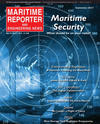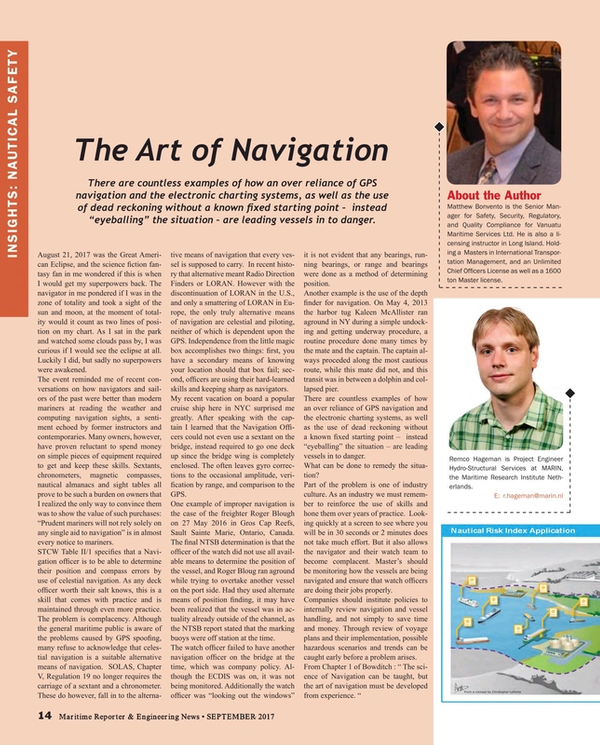
The Nautical Safety Profile
by Remco Hageman
MARIN is working together with the industry to develop the Nautical Safety Profile for operations and risk management.
Liquefied natural gas (LNG) is increasingly being used as an alternative fuel, both at sea and on land, to reduce pollution from transportation.
In 2011 the first LNG carrier arrived at the Rotterdam Gate terminal, and last year the terminal was upgraded to facilitate the transfer of LNG to shuttle tankers. An extensive safety analysis was carried out prior to the development of the terminal and a dedicated harbor access policy has been defined.
But how should the access policy be defined when there isn’t an LNG carrier in the harbor, but when there are multiple LNG bunker ships, or when numerous LNG-powered vessels are sailing through?
And how about international design criteria for LNG vessels that may operate in the harbor? In other words, how should a responsible balance between safety, environmental pollution and economic efficiency be continuously maintained?
In such a highly dynamic situation not every condition can be analyzed in advance. A practical solution would be if every LNG carrying ship was equipped with safety documentation describing the design and risks in different operating conditions.
The same can be done for terminals, river crossings, locks etc. This is the Nautical Safety Profile.
The Nautical Risk Index defines the risk of collisions between ships in the harbor. By combining the Nautical Safety Profile and the Nautical Risk Index, Vessel Traffic Centres are able to assess the risk of ongoing and planned operations.
Other ongoing operations and risk management options, such as emergency towing vessels, can be related to the Nautical Risk Index. While operators can use the Nautical Safety Profile to modify operations in real time to ensure the required safety level. Finally, the Profile can be used in the development of new infrastructure.
A collaboration between MARIN and industry partners has started to define the requirements for the Nautical Safety Profile. The applications of the Nautical Safety Profile are being defined and the integration with existing data sources such as AIS, is being examined.
The Author
Remco Hageman is Project Engineer Hydro-Structural Services at MARIN, the Maritime Research Institute Netherlands.
(As published in the September 2017 edition of Maritime Reporter & Engineering News)
Read The Nautical Safety Profile in Pdf, Flash or Html5 edition of September 2017 Maritime Reporter
Other stories from September 2017 issue
Content
- Marine Casualty Investigation page: 10
- The Art of Navigation page: 14
- The Nautical Safety Profile page: 14
- Ocean Guardian: Simplifying Environmental Compliance page: 16
- LNG: Maritime's 'Fuel of the Future' page: 20
- USCG Releases Draft Cyber Guide for Maritime Facilities page: 28
- Data Analytics in the Maritime Space page: 29
- Inside the USS Gerald R. Ford page: 30
- Aerial Drones Take Flight in Maritime page: 38
- FPSOs: New Storage Tank Explosion Frequencies page: 42
- Interferry Mission: Strength from Unity page: 46


